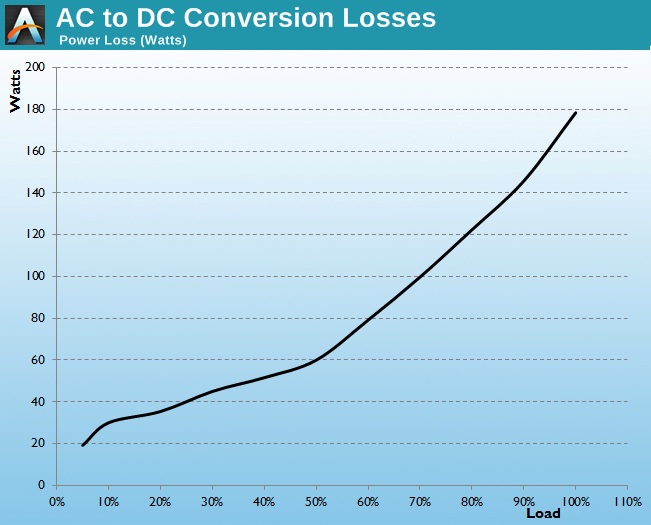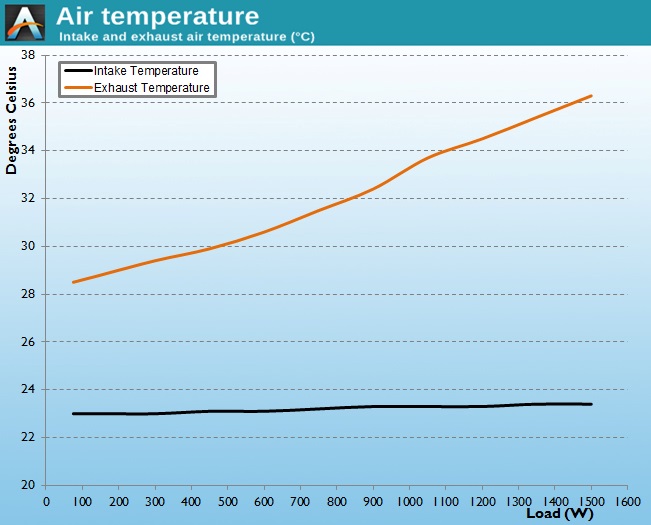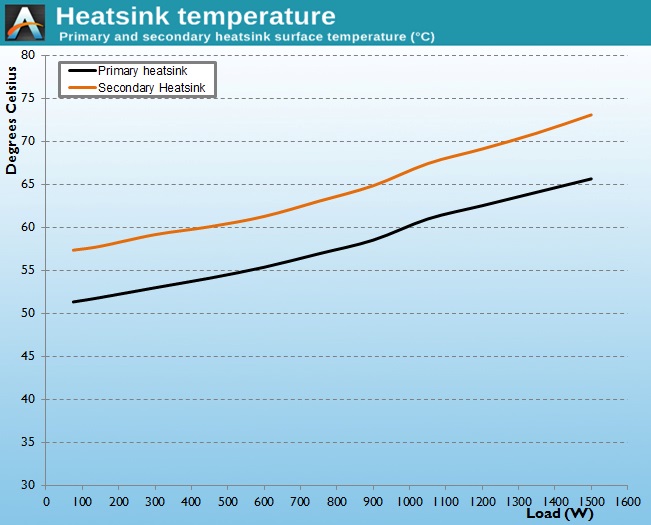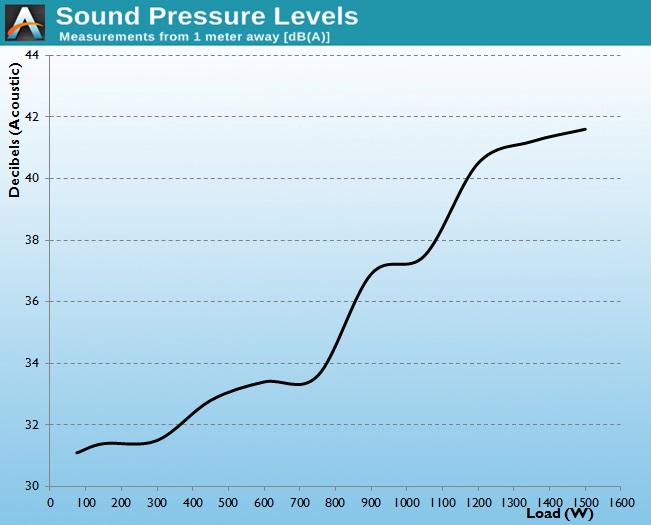The SilverStone Strider Gold S 1500W PSU Review
by E. Fylladitakis on April 7, 2015 8:00 AM EST- Posted in
- Cases/Cooling/PSUs
- PSUs
- SilverStone
- 1500W
Cold Test Results
For the testing of PSUs, we are using high precision electronic loads with a maximum power draw of 2700 Watts, a Rigol DS5042M 40 MHz oscilloscope, an Extech 380803 power analyzer, two high precision UNI-T UT-325 digital thermometers, an Extech HD600 SPL meter, a self-designed hotbox and various other bits and parts. For a thorough explanation of our testing methodology and more details on our equipment, please refer to our How We Test PSUs - 2014 Pipeline post.
The SilverStone Strider Gold S 1500W met its 80Plus Gold conversion efficiency requirements, even if only barely. We recorded a maximum conversion efficiency of 90% at 50% load and an average of 90.0% within the nominal load range (20% to 100% of the unit's capacity). Low load performance is mediocre, with the ST1500-GS maintaining an efficiency of 80% at 10% load, which drops to 74.4% at just 5% load. These are actually good figures considering the size of the power supply, yet they are nothing special by today's standards.
Always considering its massive power output, the ST1500-GS maintains very low internal temperatures. The primary heatsink of the PSU barely reached 67°C under maximum load, when the four transistors were pumping more than 1.5kW to the main transformer. This can be partially attributed to the "stepping" behavior of the cooling fan. While the load is low, the fan is barely audible when unobstructed, meaning that it would be virtually imperceptible with the PSU installed inside a case. At 55%-60% load, the speed of the fan steps up and the fan becomes audible, yet the noise output remains within comfortable limits. If the load exceeds 70% of the unit's capacity, then the fan speed steps up again, making the fan clearly audible and clearly prioritizing thermal performance over acoustics.















32 Comments
View All Comments
Sabresiberian - Wednesday, April 8, 2015 - link
"Albeit crude, the assembly quality certainly has room for improvement but it does not cause reliability concerns. "It might not cause concerns for you, but it sure does for ME.
I think we need a new set of standards to judge PSUs by. Long gone are the days when Tomshardware and others demonstrated that most PSUs designed for desktop computers were simply bad and it didn't take much digging to find out the truth of the matter. Now brand name companies and manufacturers up and down the line understand how to pass tests in reviews and build their PSUs to do so. Good news, we are less likely to buy one that fries our build in its lifetime.
Bad news, PSUs like this one slip in to the category of "acceptable" along with far better built devices. Name brands like Silverstone hide the fact that they farm their business out to the lowest bidder and some of their PSU lines are far from good or reliable. A bit of sloppy work here or there might not seem all that important until you think about how time and use magnify those weaknesses and can easily cause them to become real problems. And with a PSU, "real problems" can translate to a fried mainboard, CPU or other components that get taken out when it self-destructs.
Assembly quality is where engineering meets the real world, and a PSU is only as good as its weakest solder joint.
Oxford Guy - Thursday, April 9, 2015 - link
35 dB at 250 watts, 38 dB at 550 watts, 39 dB at 650 watts...